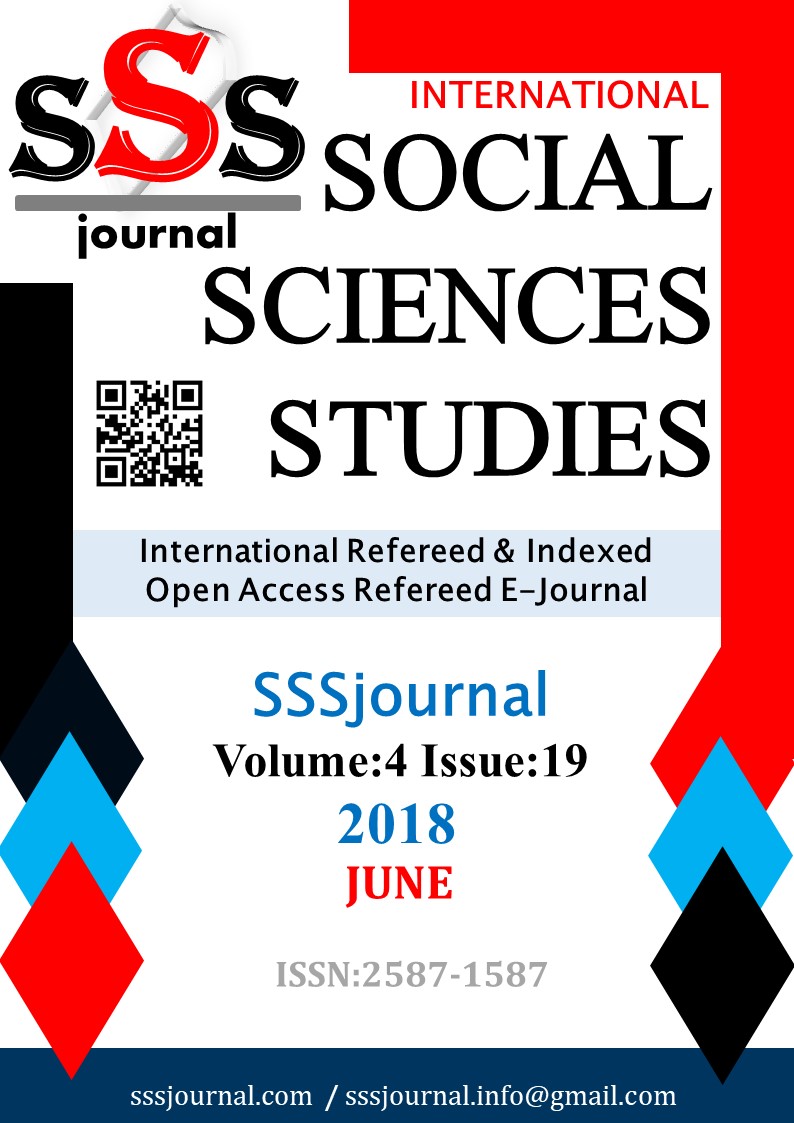DEMOGRAFİK DEĞİŞKENLER İLE RİSK KÜLTÜRÜ ARASINDAKİ İLİŞKİ:TRC1 BÖLGESİNDE FAALİYET GÖSTEREN ULUSLARARASI İŞLETMELERİN YÖNETİCİLERİ ÜZERİNE BİR ARAŞTIRMA
Author :
Abstract
Son yıllarda iletişimde, ulaşımda ve teknolojide yaşanan hızlı ve olumlu gelişmelere paralel olarak, küreselleşmenin yayılması dünyayı büyük bir köy haline getirmiştir. Yerel düzeyde üretim yapan işletmeler bile küreselleşmenin etkisiyle kısa zamanda uluslararasılaşmakta ve yabancı pazarlarda faaliyet göstermek zorunda kalmaktadırlar. Yabancı pazarlara açılan işletmeler, iç pazara kıyasla kontrol edemediği çok sayıda faktör nedeniyle büyük belirsizlikler ve çeşitli risklerle karşı karşıya kalmaktadırlar. İşletmeler güçlü risk kültürleri sayesinde yaşanabilecek riskleri ve tehlikeleri en aza indirip bunlara fırsata çevirmek istemektedirler. Bu araştırmanın amacı, TRC1(Gaziantep, Adıyaman, Kilis) bölgesinde yerleşik uluslararası işletme yöneticilerinin demografik özellikleri ile risk kültürü ve risk kültürünün alt boyutları arasındaki ilişkinin incelenmesidir. Araştırmadan elde edilen sonuçlara göre, uluslararası işletmelerin yöneticilerinin yaş ve işletmedeki görevi değişkeni ile risk kültürü arasında anlamlı bir farklılık olduğu ve işletmenin tüzel kişiliği, yaş değişkeni ve işletmedeki görev değişkeni ile risk kültürünün alt boyutlarından olan formalleşme alt boyutu arasında anlamlı bir farklılık olduğu tespit edilmiş; karar verme, risk algısı ve odaklanma alt boyutları ile herhangi bir anlamlı farklılık bulunamamıştır.
Keywords
Abstract
İn recent years, in paralel with rapid and positive developments in communication ,transportation and technology ,spread of globalization has made the World a big village.Even local manufacturing enterprises have to internationalize in a short time due to the impact of globalization and have to operate in foreign markets. Enterprises opening up to foreign markets are faced with great uncertainties and various risks due to the numerous factors they can not control when compared to the internal market. Businesses are willing to minimize the risks and threats that can be experienced through strong risk cultures. The aim of this research is to examine the relationship between the demographic characteristics of international business managers established in TRC1 (Gaziantep, Adıyaman, Kilis) region and the sub-dimensions of risk culture and risk culture. According to the results obtained from the study, it was determined that the responsibilities of the managers of the international enterprises were significantly different between the variables and the risk culture, and that there was a meaningful difference between the legal personality of the business, the age and the duty, and the sub-dimensions ; There were no significant differences with decision making, risk perception and focusing sub-dimensions
Keywords
- Banks, E. (2012). Risk Culture a Pratical Guide to Building and Strengtheninig The Fabric of Risk
- Bostancı, Ö. (2013). ‘’ Presentation of a Risk Culture Framework and Assessment of Risk Culture at Garanti
- Brooks, D. W. (2010). Creating a Risk Aware Culture. in Enterprise Risk Management: Today’s Leading
- CAS (2003). Overview of Enterprise Risk Management,
- http://www.casact.org/Area/erm/overview.pdf,Erişim Tarihi:03.08.2017.
- Cohen, M.W. ve Palmer, G.R. (2004). Project Risk İdentification and Management, AACE International
- Cortez, A. (2011). Winning at Risk: Strategies to Go Beyond Basel, New York: John Wiley and Sons.
- COSO (2004). Enterprise Risk Management-Integrated Framework,September,Newyork http://www.coso.org/documents/coso_erm_executivesummary.pdf,Erişim tarihi:17.08.2017.
- Deloitte Australia (2012). Cultivating an Intelligent Risk Culture:A Fresh Perspective, Sydney, AU: Deloitte
- Ernst ve Young (2012). Remaking Financial Services Risk Management Five Years After The Crisis a
- Survey of Major Financial İnstitutions, http://www.ey.com/Publication/pdf,Erişim Tarihi:22.07.2017.
- Farrel, J. M. ve Hoon, A. (2010). What’s Your Company’s Risk Culture?, Bloomberg Businessweek, May
- 12, 2009.
- Fikirkoca, M. (2003). Bütünsel Risk Yönetimi,Anakara:Pozitif Matbaacılık.
- Hillson D. (2012). How Much Risk is too Much Risk? Understanding Risk Appetite,
- http://www.riskdoctor.com/docs/paper.pdf.,Erişim Tarihi:27.07.2017.
- IIF (2009). Reform in the Financial Services Industry: Strengthening Practices for a More Stable System,
- IRM (2012). Risk Culture Under The Microscope Guidance for Board, The Institute of Risk
- Management.Https://Www.Theirm.Org/Media/885907/:Risk Culture_A5_Web15_Oct_2012.Pdf,Erişim
- Lermack, H.B. (2008). ERM in action, Risk Management, 55(5),50-54.
- Mcshane, M. K.; Nair, A. ve Rustambekov, E. (2010). Does Enterprise Risk Management İncrease Firm
- Meulbroek, L. K. (2002). Integrated Risk Management for The Firm: A Senior Manager's Guide, Journal of
- Power, M. A. (2012). Risk Culture in Financial Organisations: A Research Report, Centre for Analysis of
- Risk and Regulation, http://www.cimaglobal.com/Documents/Report.pdf,Erişim Tarihi:16.08.2017.
- Roeschmann, A. Z. (2014). Risk Culture: What it is and How it Affects an İnsurer's Risk Management, Risk
- Smallman, C. (1996). Risk and Organizational Behavior: A Research Model Disaster Prevention and
- Tavşancıl, Ezel (2010). Tutumların Ölçülmesi ve SPSS ile Veri Analizi, 4. Baskı, Ankara:Nobel Akademi.





